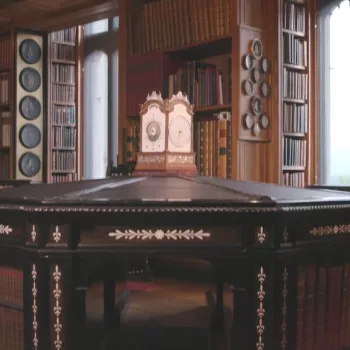Keeping Time: Clocks in the Royal Collection
Extraordinary timepieces dating from 1630-1830

Mechanical timekeeping has long been of interest to the monarchy. Clocks and watches have been collected by monarchs across the centuries, whether as a means to ensure the carefully structured ceremony and routine at court, out of an interest in scientific innovation, or for the enjoyment of aesthetic brilliance. Items in the Royal Collection range from some of the earliest examples of a barometrical clocks to timepieces with elaborate porcelain decoration or musical components.
Automated timepieces have been used in Britain since around 1300, but until the mid-seventeenth century clock- and watch-making in this country was incredibly rare. It was only under the Stuart kings that the domestic craft truly developed. Charles I (1600–1649) created the Worshipful Company of Clockmakers in 1631, while his son, Charles II (1630–1685) went on to establish the Royal Observatory in 1675. These institutions proved fundamental to scientific development in the field and reflected the horological interests of their patrons. Charles I is said to have kept two watches – one of gold and one of silver – beside his bed, which he wound each night before retiring. His son was also a collector and in 1675 purchased a watch made by the eminent scientist Robert Hooke and a Bedfordshire-born craftsman named Thomas Tompion (c.1639–1713).
Today, Tompion is considered one of the greatest English clockmakers of all time. During his life, some 650 clocks and 5,000 numbered watches were produced by his workshop, which operated at the sign of 'The Dial and the Three Crowns' – an image perhaps intended to indicate his patronage by three successive sovereigns. The most enthusiastic of these was William III (1650–1702), for who he made several longcase clocks, as well as four early barometers, which measure changes in atmospheric pressure on a clock-like dial. Several exquisite examples remain in the Royal Collection today.
Developments in mechanical timekeeping continued into the nineteenth century and royal collecting in this period was particularly prolific. As a patron of science, George III (1738–1820) encouraged some of the most important developments in the field and added the latest cutting-edge clocks and watches to the Collection. Among them are works by the leading craftsmen Christopher Pinchbeck (c.1670–1732), Thomas Mudge (1715–1794) and Alexander Cumming (c.1732–1814). George IV (1762–1830) was an indulgent admirer of French works of art and his acquisitions included a number of fabulously ornate clocks from the continent, many of which were restored or supplemented by his clockmaker, Benjamin Vulliamy (1747–1811).
Today, many of the spectacular clocks furnishing royal residences stem from this rich period of craftsmanship and collecting.
Watch the film below to learn about George III's fascination with astronomical clocks or click on an object to find out more.





